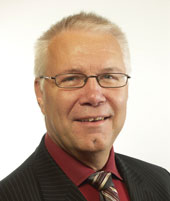Foreword: Sweden works to maintain a successful open rail market
Posted: 18 September 2014 | | No comments yet
The Swedish railway system is undergoing a period of reform and modernisation. The first step of this extensive overhaul can be traced back to 1988, when the national railway authority – SJ – was split into two separate units; one responsible for the administration of the country’s rail infrastructure (then Banverket; currently Trafikverket) and the other for train operations (SJ). This move subsequently opened for competition on the tracks and a new type of administrative organisation followed naturally. Jan-Evert Rådhström – Vice Chair of the Committee of Transport and Communications of the Swedish Parliament – looks back at how the Swedish rail market operated before deregulation and examines what the future will hold following the government’s launch of a national plan for the transportation system for 2014-2025.


Jan-Evert Rådhström – Vice Chair of the Committee of Transport and Communications of the Swedish Parliament
Going from a sluggish governmental authority towards a market with free operators, with various roles and responsibilities, has not been a walk in the park. Ensuring efficient collaboration between the various organisations is time consuming. Today, the railway infrastructure is administered by government agency Trafikverket (the Swedish Transportation Administration), responsible for planning and contracting, while Transportstyrelsen (the Swedish Transport Authority), monitors compliance. Construction and maintenance is performed by competing contractors. Stations and depots are run by both public and private real estate companies. Goods and passenger transport services are fully exposed to competition. The market for rail freight was fully opened in the mid-1990s. Commuter train services were deregulated in 1990 and have since been run by county authorities. The market for long-distance passenger transport has been opened step-by-step – initially, international transports, followed by weekend trains, and finally, since 2012, all train transports in Sweden are subject to competition. Within a few years, multiple operators will compete on the Swedish railroads. We can now observe the positive effect of deregulation on how the Swedish railroads are organised.
This deregulated organisation might come across as unstructured from a European point-of-view, where railways generally are administered within national governmental monopolies. However, the Swedish railway administration of today is actually more efficient than it used to be – tax payers get more value for money. Contractors performing construction and maintenance are encouraged to work efficiently, and cooperate with train operators to minimise delays for transports.
Unfortunately, Swedish railways are burdened by poor capacity. Ever since the deregulation process started, demand for railway transports has increased significantly. More people are travelling by train than ever before and the need for rail freight transport is high. As much as this development is very welcome, lack of railway capacity cause bothersome delays and disruptions that are a recurring subject to debate. Regrettably, former governments have failed to see the shortcomings on the Swedish railways that need attention.
To restore function and punctuality of the Swedish railways to an acceptable level, the centre-right government has taken an all-encompassing approach to the transportation system, with a particular focus on railways. Trafikverket has thoroughly investigated the need for more and new capacity, and the government has subsequently launched a national plan for the transportation system for 2014-2025. This plan includes substantial efforts for rebuilding the Swedish railways. Extensive capacity building efforts along the busiest railway sections are being made. Requirements for efficient commuting in the most densely populated areas are improved, while important railways for goods transportation are strengthened. These efforts will be the base of a modern Swedish railway system – a necessity for future employment and growth. It is also an important step towards decreasing climate impact from transports, making Sweden a proactive industrialised country with ambitious environmental aims.
The importance of maintenance is highlighted in the national plan. The current government has doubled the grants for this purpose, compared to earlier national plans. Bottlenecks are removed, old switches are replaced, bent tracks are straightened and single-tracks are doubled where needed. Naturally, the plan also contains new investments – for example, commuter trains are separated from long-distance trains at Stockholm Central Station, strengthening capacity and decreasing the risk for disruptions far from the capital. Trimming and smarter scheduling are other measures that at a low cost increase capacity. Trafikverket are also introducing a new, national traffic management system, as well as implementing ERTMS.
The most ambitious decision the government has made is to begin building a new system for high-speed trains. This new system will link Sweden’s three largest cities to each other and further on into Europe. The first sections are to be built before the current plan period runs out in 2025, and the ambition is for the entire system to be completed by 2035.
After 16 years as an MP and eight years as Vice Chair of the Committee of Transport and Communications of the Swedish Parliament, it is with a feeling of trust and faith that I am leaving politics. I am convinced that the deregulation and transformation towards an open market has been crucial in the making of a modern Swedish railway system, adapted for our time. The future of Swedish railway transport will be prosperous, provided that coming governments, regardless of political allegiance, proceed on this path.


